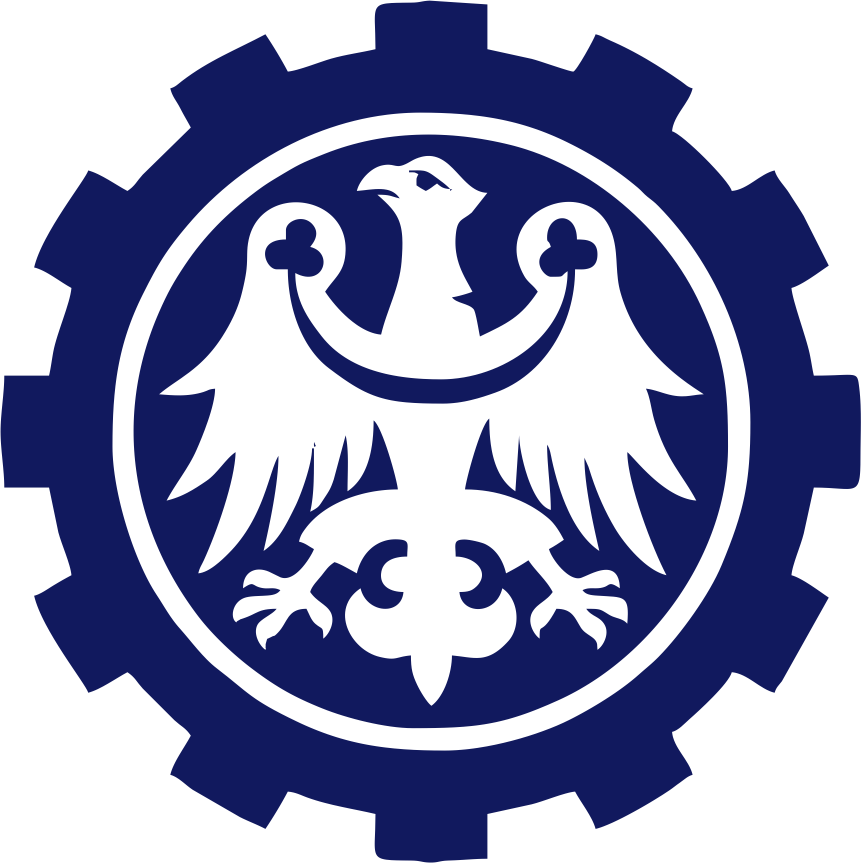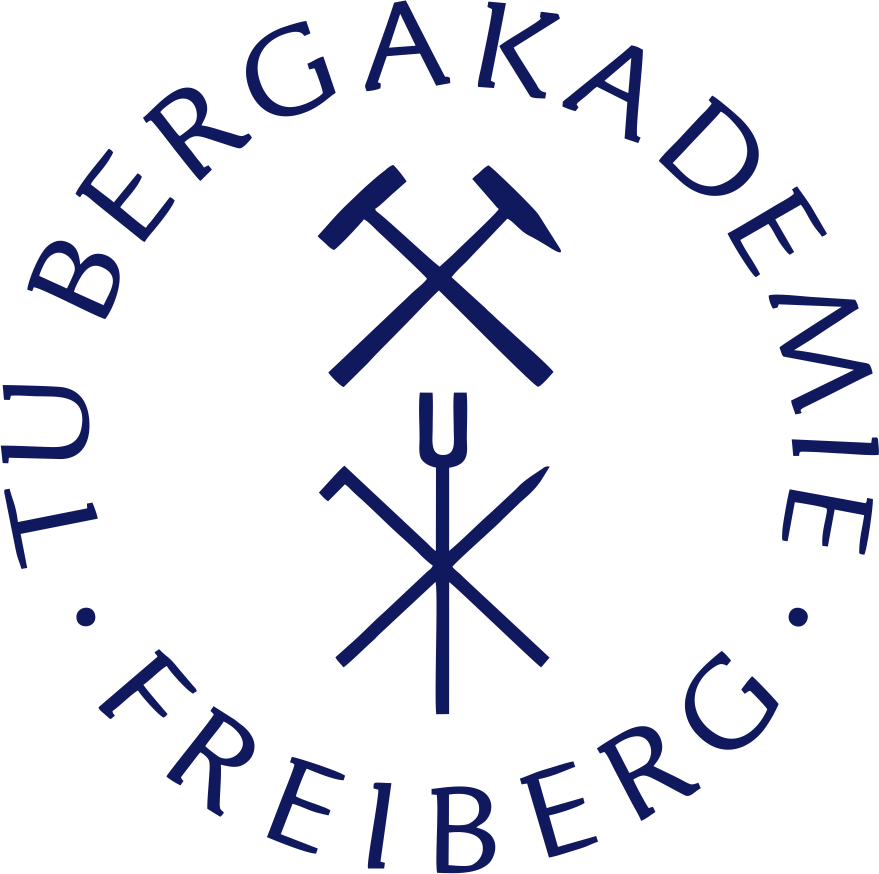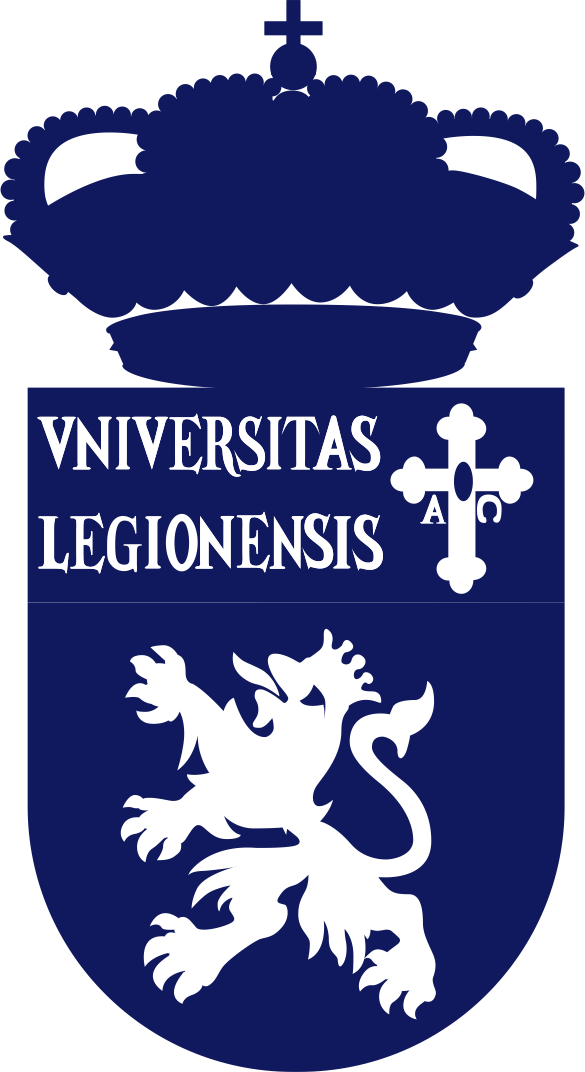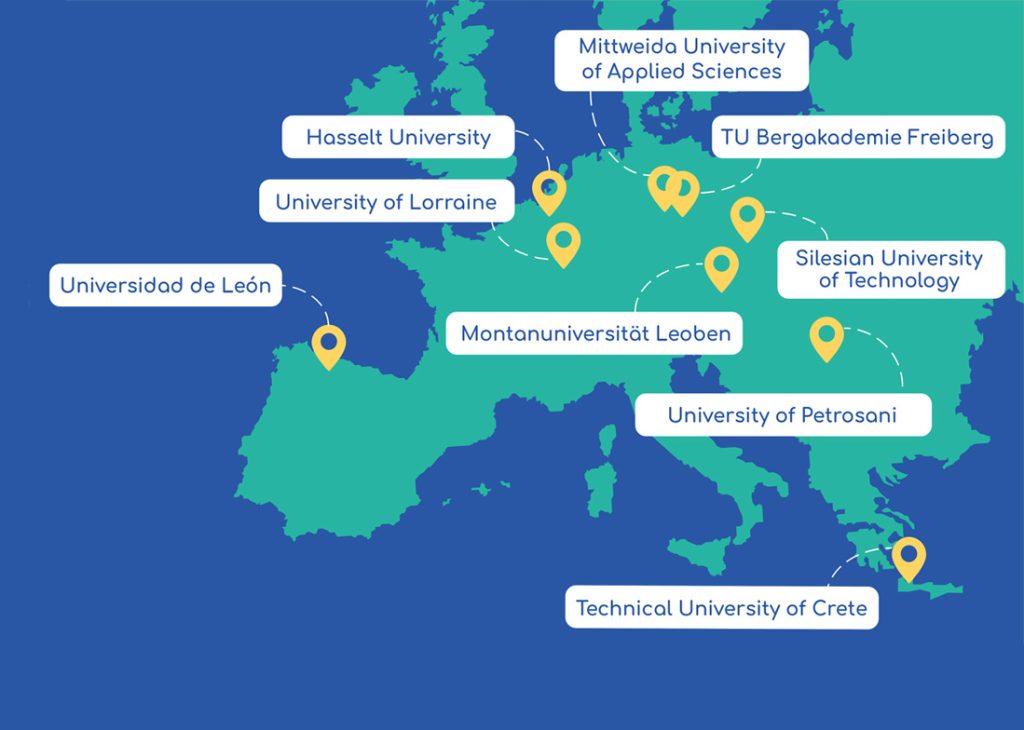Our Research Profiles
Explore our research profiles through the links below

Hochschule Mittweida (HSMW)
Laser Technologies
- laser micro- and nanoprocessing, USP processes
- laser high rate processing, surface processing
- pulsed laser deposition, thin-film systems
- additive manufacturing processes (3D printing)
- laser macro technologies, laser process technologies
- photonics, optical metrology
- modelling and simulation
Product and Process Development
- power engineering and systems, resource management
- information and system electronics, embedded systems
- manufacturing technologies, work planning
- materials & surface technologies,
- drive systems, robotics, automation, industry 4.0
- component development and -rating,
- fibre composites
- biological systems and technologies
Digitalisation in Economy and Society
- challenges of economic and social change
- Open Government
- working environments, life situations, mobility
- regional development und entrepreneurship
- digital education technologies
- innovative media technologies, applied acoustics
Applied Computer Science
- ICT, networks and distributed systems
- machine learning, applied mathematics
- big data, blockchain / DLT, cryptography
- software engineering, visualisation
- web-, app-, cloud- & gaming technologies, IoT
- virtual reality / augmented reality
- computational life sciences, digital forensics, IT security

Montanuniversität Leoben (MUL)
Overview of research areas
- Mineral Resources Production and Processing
- Metallurgy
- High-Performance Materials
- Process and Product Engineering
- Environmental Technology and Recycling
- Energy Technology and Resource Management
- Safety Engineering and Risk Management
- Mathematics, Natural Sciences, Engineering and Economics

In the field of competence “Advanced Resources”, the Montanuniversität Leoben focuses in particular on the following key areas:
- Development and application of geophysical methods for the investigation of the earth’s crust
- Deposit formation in the regional and geodynamical framework
- Mining and tunnelling with a special focus on new resource- and energy-efficient technologies, the digitalisation of technologies, the digitalisation of processes, the development of new mining methods, geotechnology and safety technology for the construction and operation of subsurface facilities. In this context the Zentrum am Berg (ZaB), a large-scale subsurface research laboratory, is unique in Europe.
- Raw material analysis, suitability and requirements for the development and optimisation of process sequences.
- Refinement technologies for the innovative use of raw materials
- Development of the scientific basis for raw material certification for the labelling of products.
- Digitalisation of the core processes
- Securing the energy supply through
a) Research on the formation and sustainable use of hydrocarbon reservoirs, with particular emphasis on cost-efficient drilling methods and increasing the use of reservoirs.
b) Use of geothermal energy
c) Use of the underground to store hydrogen, hydrogen-based raw materials, CO2 and heat. This requires the use of synergies through intensified cross-disciplinary cooperation of the raw materials sector with areas of process engineering, materials, etc.
In the field of competence “Smart Materials”, the Montanuniversität Leoben focuses in particular on the following key areas:
- Metallic engineering materials for novel steels for automotive and tooling applications.
- Intermetallic materials and refractory metals for high-temperature applications and for medical technology
- Functional materials with a special focus on new concepts for materials in energy technology to increase the efficiency of alternative energy technologies and to advance new techniques for energy conversion and storage
- Materials for microelectronics, flexible electronics and for communications (5G technology)
- Development of polymers and reactive resins for additive manufacturing, biogenic plastics and compounds
- Energy efficiency in the processing of composites and elastomers
- Development of concepts for the lifetime prediction of plastics, the design of materials for lightweight construction and hybrid structures, and the recycling of plastics (Circular Economy).
- Sustainable material design with the inclusion of available raw materials and recyclability
- Virtual Materials Design
In the field of competence “Sustainable Processing”, the Montanuniversität Leoben focuses in particular on the following key areas:
- Linking material and/or product production with the collection systems in waste management and waste recovery technology, processing and the actual recycling and recovery processes, as well as the provision and optimisation of recycling technologies to supplement primary resources.
- Metallurgy as well as material and product design, taking into account a sustainable raw material base and recyclability (Zero Waste).
- Disassembly and re-use strategies, the development of life-cycle considerations, technology assessments and the definition of benchmarks for energy and material efficiency.
- Materials-oriented mechanical engineering, use of additive manufacturing and smart predictive analytics for the transformation of industrial production to the Circular Economy
- Decarbonisation of industry through the use of energy-efficient technologies, as well as through the integration of decentralised and fluctuating energy generation with new methods of energy distribution and energy storage, as well as sector coupling in energy technology
- Energy process optimisation of existing production sites and new ones to be built by connecting previously unused surplus energies (e.g. heat) with demand sources at other production areas or at other times.
- High-temperature and thermoprocess technology in energy-intensive industry.
- Technical climate protection, environmental and process engineering, in particular utilisation of CO2 via Carbon Capture and Utilisation (CCU) as a CO2 reduction and utilisation measure.
- Hydrogen as energy vector of the future and reducing agent in metallurgy. Generation of hydrogen with reduced CO2 footprint via methane pyrolysis, which combines raw material, material and process technology aspects.
- Biogenic materials as a source of raw materials in addition to their conventional use as materials or energy carriers to transform the fossil base of chemical and petrochemical products to renewable sources.
- Design to Sustainability, both at product and process level

Politechnika Śląska (SUT)
Computational oncology and personalized medicine;
Artificial intelligence and data processing
- application of artificial intelligence methods in optimisation problems, construction of decision and quality systems, authentication of people, and natural language processing
Materials of the future
Smart cities and future mobility
- identification of the needs connected with the existing infrastructure as well as those of the society
- technological and spatial development making it possible to satisfy the needs previously identified, to overcome contemporary limitations, to improve the efficiency of solutions, and to reduce the negative impact of human activity on natural environment and quality of life.
Sustainable consumption and production
- environmental impact caused by transport and by waste generation because of design, production and use of vehicles, as well as of vehicle operation and decommissioning, and on the development of air pollution profiling systems and the application of Life Cycle Assessment as a tool for analysis of the environmental impact of smart urban solutions, development of methods and technologies intended for acquisition and processing of transport infrastructure, qualitative and quantitative social surveys used to describe various phenomena related to the human factor in urban transport and logistics.
Process automation and Industry 4.0
Climate and environmental protection, modern energy
- Climate and environmental changes and reduction of air pollution,
- Water and wastewater management and environmental biotechnology,
- Circular economy,
- Renewable and alternative energy sources and prosumer energy,
- Innovative technologies and sustainable development,
- Education for sustainable development and shaping environmental awareness,
- Problems of degradation and revitalisation of areas,
- Energy efficiency and energy management,
- Energy storage and hydrogen energy,
- Shaping the internal environment
- Intelligent buildings
- Strategy for sustainable development of energy and gas energy.

Technische Universität Bergakademie Freiberg (TU BAF)
- Energy efficiency through selective cutting and the reduction of waste generation,
- Enhanced recovery of mineable resources,
- Sensors, algorithms, automation and robotics in mining,
- Improvement of equipment availability,
- Health and safety and rescue
- Environmental technologies for the recovery of raw materials from environmental compartments
- Climate modelling and hydrogeological modelling for forecasting groundwater replenishment and the availability of water resources
- Solar energy, solar thermal energy, geothermal energy, biogas and gasification technologies
Study of consumer patterns and behaviour with respect to natural resources, energy and water, recycling and re-use.

Polytechneio Kritis (TUC)
Air pollution
- Basic research on suspended particles dynamics. Applications to the atmosphere. Heterogeneous reactions on the surface of particles.
- Development and application of three-dimensional models of air pollution.
- Application of air quality models to study the dispersion and physico-chemical processes of atmospheric pollutants in the troposphere.
- Measurements of air pollutants and meteorological data in the atmosphere.
- Modelling processes and measurements of air pollutants indoors. Modelling the transport of air pollutants in the human body.
- Technology development for the biological treatment of gaseous waste.
- Mobile (automotive) and Stationary (industry) gas emissions control.
- Environmental catalysis; Development of (nano-) composite catalytic materials for the abatement of gas pollutants.
- Water quality.
- Emphasis on the identification of organic micro-pollutants and by-products of disinfection.
- Water and wastewater treatment.
- Membrane bioreactors.
- Natural and decentralised waste management systems.
- Agro-industrial solid waste and sludge valorisation.
- Solid waste characterisation, management and treatment.
- Technology development for soil and solid waste (toxic and dangerous) bioremediation.
- Development of oil spill response.
- Development, analysis, design, process control and optimization of biochemical processes.
- Design and application of contaminated soils and groundwater remediation technologies.
- Hydrology
- Geology and Hydrogeology.
- Coastal Engineering.
- Geographic Information Systems (GIS).
- Environmental Models.
- Optimal water resources management.
- Environmental applications of the above.
- Natural disasters -Floods – Earthquakes.
- Soil mechanics.
- Foundations design and construction.
- Geodesy
- Renewable Energy Systems Management.
- Life Cycle Analysis.
- Biofuels
- Energy efficiency in the built environment.
- Green buildings. Zero carbon emission buildings.
- Urban environment and climate change. Urban heat island and sustainable cities.
- Energy management systems. Buildings modelling control and optimisation systems.
- Fuel Cells; Cogeneration of useful chemicals and electricity.
- Hydrogen Energy; Hydrogen Production.
- Natural gas and Biogas Valorisation and Utilisation.
- Design and development of novel electrochemical; reactors and processes.
- Micro-extraction innovative techniques for quantification of organic micro-pollutants in environmental samples.
- Environmental monitoring and fate of organic micro-pollutants in the environment.
- Detection, isolation and study of microorganisms.
- Microbial resistance against variable antibiotic agents, gene expression, resistance transport and evaluation of disinfection methods.
- Degradation of organic pollutants in aqueous phase (water and wastewater) using oxidising chemical degradation methods such as UV radiation in the presence of H2O2 (UV/H2O2), Ozone (O3), homogeneous and heterogeneous photocatalysis and electrochemical oxidation.
- Green Chemistry and Technology with emphasis on the development and implementation of environmentally friendly processes.
- Contaminated sites characterisation – exploration and evaluation of contamination.
- Remediation systems efficiency monitoring.
- Environmental Law and Environmental Governance.
- Banach Space Theory.
- Stochastic Models of tumor growth.
- Heterogeneous Catalysis and Catalyst Promotion.
- Surface, interface, structural and electronic properties of (nano-)composite materials.

Universidad de León (ULE)
Biosystems Engineering
- Plant protection and production.
- Plant physiology.
- Geomatics: drones applied to Biosystems Engineering.
- Bioremediation
- Waste recycling.
- Sustainable infrastructures and constructions.
- Environmental Science and Technology
- Research in environmental areas and environmental pollution.
- Solving problems generated in the environment.
- Application of environmental technologies.
- Application of environmental remediation techniques.
- Intervention in social welfare.
- Production and computer Engineering
- Intelligent systems.
- Advanced production technologies.
- Mechanics and Materials Engineering.
- Energy and Circular Economy.
- Mining Engineering.
- Cybernetics

Hasselt University (UH)
- CMKMB: Environmental Biology / Milieubiologie;
- CMAT: Computational Mathematics / Computationele Wiskunde;
- EMAP: Engineering Materials and Applications / Engineering Materials and Applications;
- MATCHEM: Materials Chemistry / Materiaalchemie;
- IMOMAF: Materials Physics / Materiaalfysica;
- NuTeC: Nuclear Technology Centre Nucleaire Technologie;
- MPR&S: Materials and Packaging Research & Services / Materialen en Verpakking Onderzoek en Dienstverlening;
- CERG: Construction engineering / Bouwkunde;
- Materiomics;
- ACSL: Applied Computer Science Lab;
- DBTI: Databases and Theoretical Computer Science / Databases en Theoretische Informatica;
- HCIH: Human-Computer Interaction and eHealth / Human-Computer Interaction en eHealth;
- LOG: Logistics / Logistiek;
- BINF: Business Informatics / Beleidsinformatica;
- CENSTAT: Centre for Statistics / Centrum voor Statistiek;
- IIW: Engineering Technology / Industriële ingenieurswetenschappen;
- EEC: Environmental Economics / Milieueconomie;
- MAR: Marketing;
- CTL: Center for Applied Linguistics / Centrum voor Toegepaste Linguïstiek;
- R4D: Research for Digitalisation, Diversity and Democracy / Onderzoek naar Digitalisering, Diversiteit en Democratie;
- EEC: Environmental Economics;
- ZEET: Healthcare & ethics / Zorg & Ethiek;
- CMKMB: Environmental Biology;
- MFPF: Molecular and Physical Plant Physiology / Moleculaire en Fysische Plantenfysiologie;
- EMAP: Engineering Materials and Applications;
- MPR&S: Materials and Packaging Research & Services;
- PEC: Economics and Public Policy / Economie en beleidsmanagement;
- CORe: Centre for Government and Law / Centrum Overheid en Recht;
- IM: Innovation Management;
- EEC: Environmental Economics;

Université de Lorraine (UL)
Université de Lorraine is an intensive research university embracing the full spectrum of scientific disciplines, and actively involved in the creation and transfer of knowledge and technological innovations to civil society, businesses and cultural stakeholders.
2,400 faculty members are the driving force behind our research activities within 60 recognised, structured research units, nearly half of which operate as part of a thriving partnership with leading national research organization (CNRS, Inserm, INRAE and Inria).
The research units are organized in 10 scientific clusters:
AGRONOMY, AGRI-FOOD & FORESTRY
- DynAMIC: Genome dynamics and microbial adaptation;
- IAM: Biology and ecology of the interactions between microorganisms and forest trees;
- LAE: Agronomy and Environment;
- LIBIO: Bio-molecular engineering;
- SILVA: Multidisciplinary and integrative research on the ecology of forests;
- URAFPA: Food safety, particularly that related to animal production and the quality of animal-derived products.
AUTOMATION, MATHEMATICS, IT & THEIR INTERACTIONS
- CRAN: Research Center for Automatic Control;
- IECL: Mathematics Research Institute;
- LCFC: Design, Production, Control;
- LCOMS: Design, Optimization and Modelling of Systems;
- LGIPM: Computer Engineering, Production and Maintenance;
- LORIA: Lorraine Research Laboratory in Computer Science and its Applications.
- APEMAC: Adaptation, measurement and evaluation in health – Interdisciplinary approaches;
- CITHEFOR: Therapeutic targets and preclinical drug evaluation;
- DCAC: Acute and chronic cardiovascular deficiency;
- DEVAH: Development, adaptation and handicap;
- IADI: Diagnostic and interventional adaptive imaging;
- IBSLOR: Engineering, Biology, Health in Lorraine;
- IGE-PVC: Gene environment interactions in cardio-vascular pathophysiology;
- IMOPA: Molecular engineering and joint pathophysiology;
- NGERE: Nutrition-genetics and exposure to environmental risks;
- SIMPA: Stress, immunity, pathogens.
KNOWLEDGE, LANGUAGE, COMMUNICATIONS & SOCIETIES
- 2L2S: Lorraine laboratory of Social Sciences;
- 2LPN: Psychology and Neurosciences of Behavioral Dynamics;
- AHP-PREST: Archives Henri-Poincaré – Philosophy and Research on Sciences and Technologies;
- ATILF: Analysis and Computer Processing of the French Language;
- CREM: Research Center on Mediation;
- INTERPSY: Research at the intersection of clinical psychology, interaction psychology and medicine;
- LISEC: Education and Communication Sciences;
- PErSEUs: Science of human, social and technological interactions.
MOLECULAR PHYSICS & CHEMISTRY
- CRM2: Crystallography, Magnetic Resonance and Modeling;
- L2CM: Molecular Chemistry;
- LCP-A2MC: Chemistry and Physics, multi-scale approach of complex environments;
- LCPME: Chemistry, Physics and Microbiology for Materials and Environment;
- LPCT: Theoretical Physics and Chemistry.
ENERGY, MECHANICAL ENGINEERING, PROCESSES & PRODUCTS
- ERPI: Research team on innovation process;
- GREEN: Nancy Electrical Energy Research Group;
- LCPMC: Laboratory of Macromolecular Physical Chemistry;
- LEMTA: Energy & Theoretical and Applied Mechanics Laboratory;
- LERMAB: Laboratory for Studies and Research on wood Material;
- LRGP: Reactions and Chemical Engineering Laboratory.
LORRAINE EARTH & ENVIRONMENT OBSERVATORY (OTELO)
- CRPG: Understanding the Earth system, from the formation of the solar system to present-day processes;
- GEORESSOURCES: Geological resources;
- LSE: Soils and Environment;
- LIEC: Interdisciplinart research on continental environments.
MATTER, MATERIALS, METALLURGY & MECHANICAL ENGINEERING
- IJL: Institut Jean Lamour, fundamental and applied research laboratory in material science;
- LEM3: Microstructures and Mechanics of Materials;
- LMOPS: Materials, Optics, Photonics and Systems.
LAW, POLITICS, ECONOMICS & MANAGEMENT
- BETA: Theoretical and Applied Economics;
- CEREFIGE: Research in Financial Economy and Management;
- IFG: Institut François Geny, private law, criminal law, history of law;
- IRENEE: Public law and political science.
TIME, SPACE, LITERATURE & LANGUAGES
- BETA: Theoretical and Applied Economics;
- CEGIL: Germanic studies;
- CERCLE: European Cultures and Literature;
- CRULH: History;
- ECRITURES: Literature, culture, civilization, and theology;
- HISCANT-MA: History and Cultures of Antiquity and Middle Age;
- IDEA: Interdisciplinarity in English Studies;
- LIS: Literature, Imaginary, Society;
- LOTERR: Geography.

Universitatea din Petroșani (UP)
- improving the methods, technologies, machines and equipment for quarries and underground mining;
- investigating rocks and analysing land stability;
- excavations and mining construction in quarries and subsurface;
- monitoring the impact of mining activities upon the environment and techniques for environment rehabilitation;
- studying the networks of mining ventilation, of microclimate and of gas dynamic and thermodynamic phenomena;
- modernising the acquiring and processing of topographic and geodesic data;
- analysing health, safety and risks in mining activities;
- studying electrical and mechanic systems in mining industry.
- increase of energy efficiency through elaborating, analysing and improving heating and fluid assessment of energy equipment;
- settling the measures for saving energy resources, for modernising equipment and increasing energy efficiency;
- energy expression of the performance of various industrial systems, estimating the technical and energy levels of the process under analysis; theoretical foundation and simulation of thermo-fluid-dynamic processes;
- decreasing energy intensity of industrial thermic equipment;
- numeric simulation and modelling of the process of heat exchange in industrial equipment.
- electrical actuator control systems, robot control systems, renewable energy systems, biomedical systems, prediction systems based on big data processing, data communication systems.
- Control of electrical drives.
- Robots in the medical field.
- Autonomous vehicles / systems.
- Communication systems.











